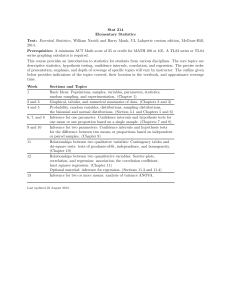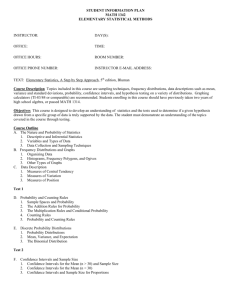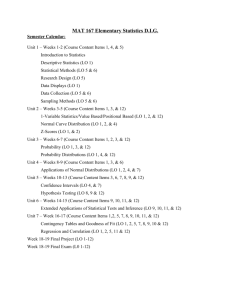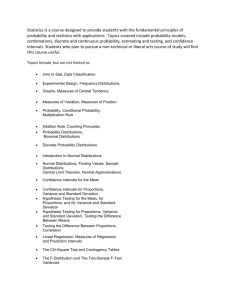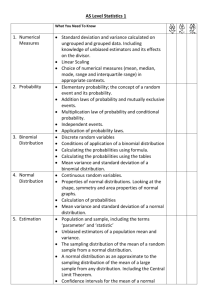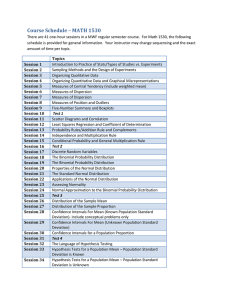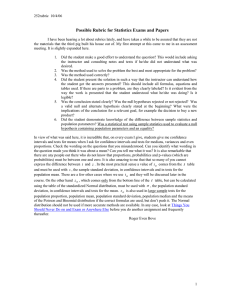MATH 1342 - Statistics
advertisement
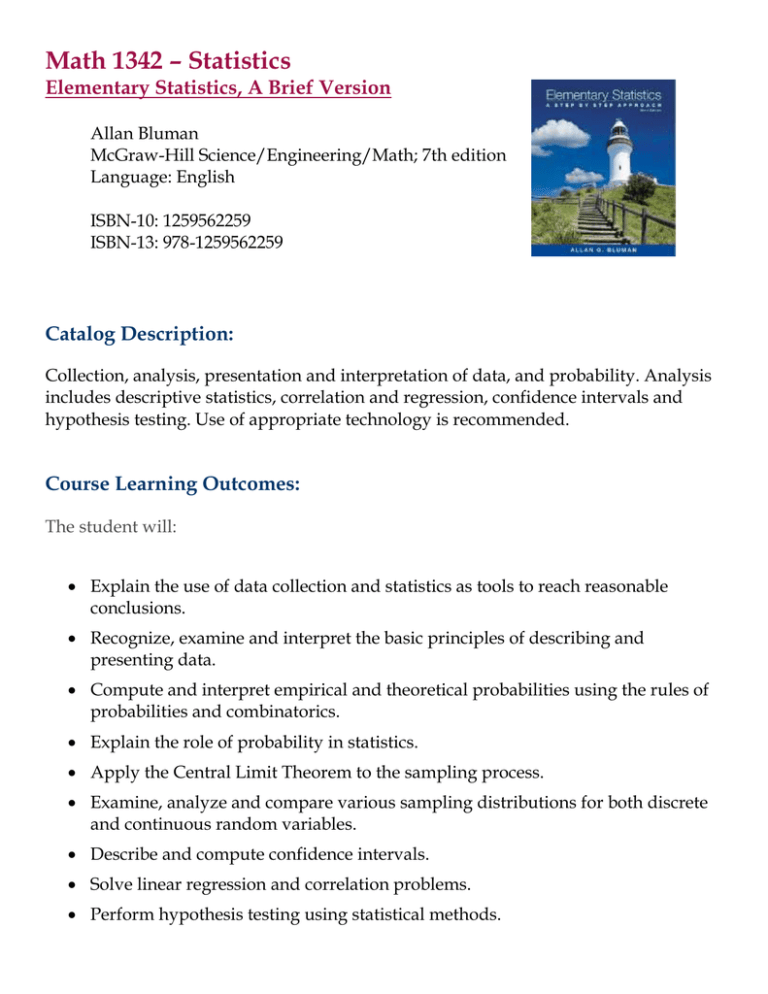
Math 1342 – Statistics Elementary Statistics, A Brief Version Allan Bluman McGraw-Hill Science/Engineering/Math; 7th edition Language: English ISBN-10: 1259562259 ISBN-13: 978-1259562259 Catalog Description: Collection, analysis, presentation and interpretation of data, and probability. Analysis includes descriptive statistics, correlation and regression, confidence intervals and hypothesis testing. Use of appropriate technology is recommended. Course Learning Outcomes: The student will: Explain the use of data collection and statistics as tools to reach reasonable conclusions. Recognize, examine and interpret the basic principles of describing and presenting data. Compute and interpret empirical and theoretical probabilities using the rules of probabilities and combinatorics. Explain the role of probability in statistics. Apply the Central Limit Theorem to the sampling process. Examine, analyze and compare various sampling distributions for both discrete and continuous random variables. Describe and compute confidence intervals. Solve linear regression and correlation problems. Perform hypothesis testing using statistical methods. Book Sections Chapter 1 Chapter 1 is mainly for reading and terminology. 1.1 1.2 1.3 1.4 1.5 1.6 Descriptive and Inferential Statistics Variables and Type of Data Data Collection Observational and Experimental Studies Uses and Misuses Computers and Calculators Chapter 2 2.1 Organizing Data 2.2 2.3 2.4 Histograms, Frequency Polygons, and Ogives Other Types of Graphs Paired Data and Scatter Plots Chapter 3 3.1 Measures of Central Tenancy 3.2 Measures of Variation 3.3 Measures of Position 3.4 Exploratory Data Analysis Chapter 4 4.1 Sample Spaces and Probability 4.2 The Addition Rules 4.3 The Multiplication Rules 4.4 Counting Rules 4.5 Probability and Counting Rules Chapter 5 5.1 Probability Distributions 5.2 Mean, Variance, Standard Deviation and Expectation 5.3 The Binomial Distribution Chapter 6 6.1 Normal Distributions 6.2 Applications of the Normal Distribution 6.3 The Central Limit Theorem Chapter 7 7.1 Confidence Intervals for the Mean Standard Deviation Known 7.2 Confidence Intervals for the Mean, Standard Deviation Unknown 7.3 Confidence Intervals for Proportions 7.4 Confidence Intervals for Variances and Standard Deviation Chapter 8 8.1 Hypothesis Testing Traditional 8.2 8.3 8.4 8.5 z Test for a Mean t Test for a Mean z Test for a Proportion Chi-Squared Test for a Variance and Standard Deviation Chapter 9 9.1 Testing the Difference Between Two Means, z- test 9.2 Testing the Difference Between Two Means, t-test Chapter 10* 10.1 Correlation 10.2 Regression *It is optional to calculate r or the regression equation by hand. It is also optional to perform the hypothesis testing in this chapter. Chapter 11 (Optional) 11.1 Test for Goodness of Fit 11.2 Tests Using Contingency Tables 11.3 Analysis of Variance (ANOVA)
